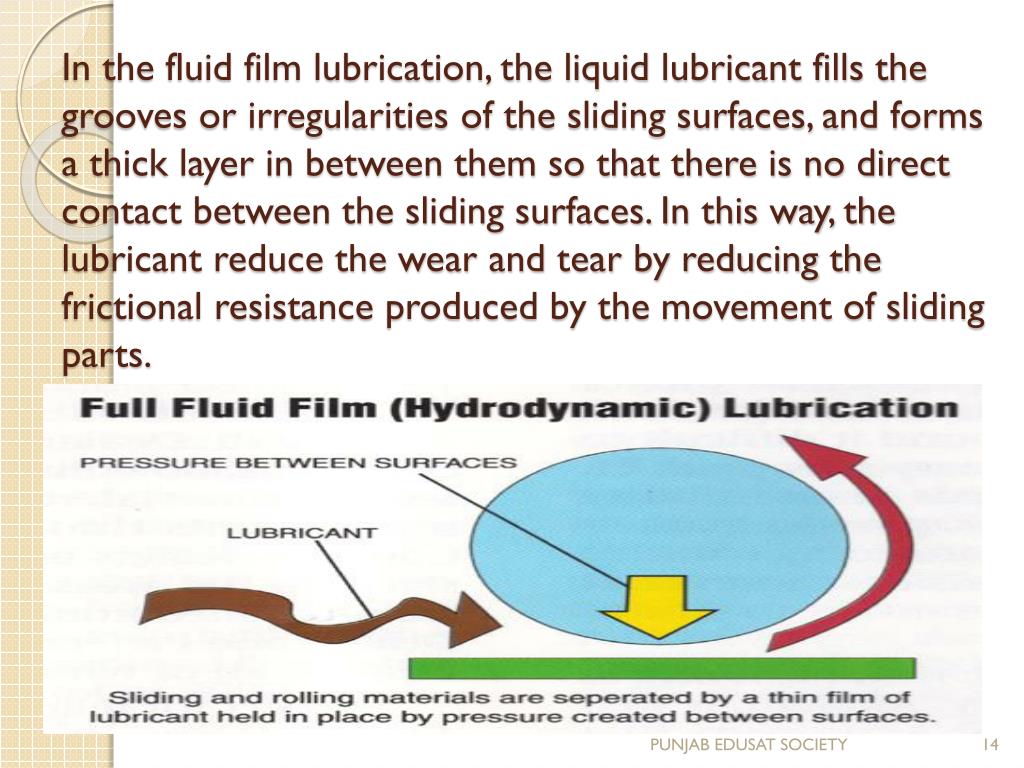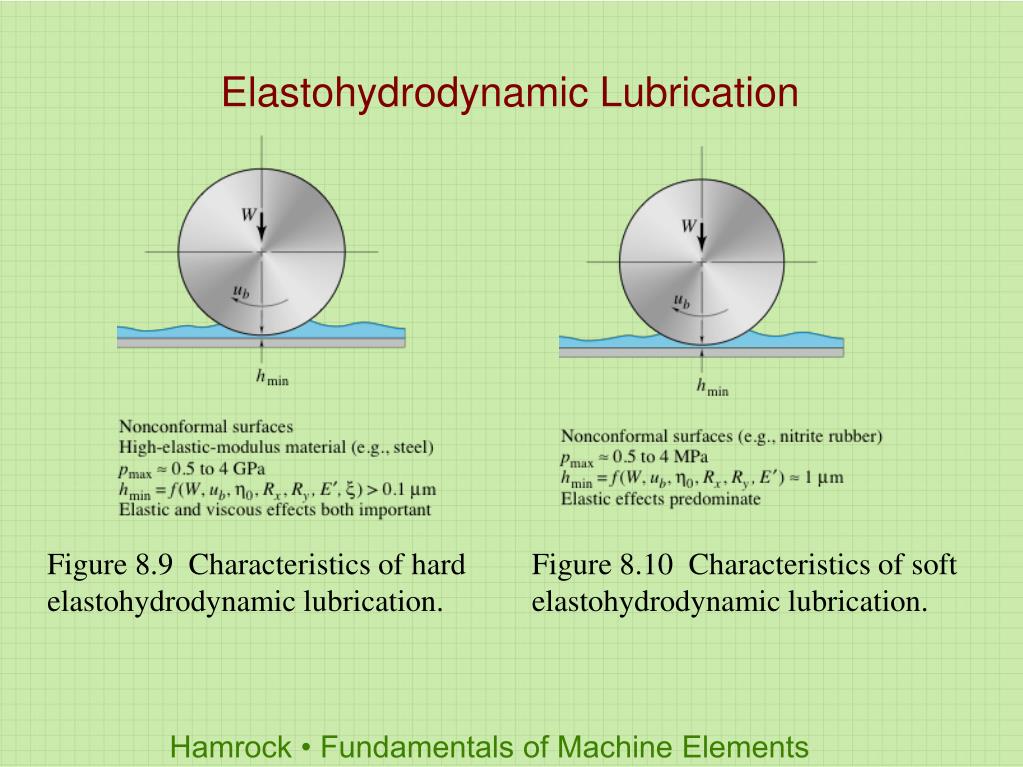Mechanism Of Lubrications (thick Film) Presentation
| Introduction | ||
|---|---|---|
| Lubrication is essential in reducing friction and wear between moving surfaces. Thick Film Lubrication is a mechanism that involves the formation of a thick layer of lubricant between surfaces. It provides superior load-carrying capacity and is commonly used in heavy-duty applications. | ||
| 1 | ||
| Types of Thick Film Lubrication | ||
|---|---|---|
| Hydrodynamic Lubrication: Occurs when a fluid film is formed due to the relative motion between surfaces. Elastohydrodynamic Lubrication (EHL): Involves the deformation of lubricant and surfaces under high loads. Squeeze Film Lubrication: Occurs when the lubricant is squeezed between surfaces due to external forces. | ||
| 2 | ||
| Mechanism of Hydrodynamic Lubrication | ||
|---|---|---|
| The relative motion between surfaces causes a pressure gradient in the lubricant. This pressure gradient generates a hydrodynamic wedge, lifting the surfaces apart. The lubricant film thickness should be greater than the surface roughness to prevent metal-to-metal contact. | ||
| 3 | ||
| Mechanism of Elastohydrodynamic Lubrication (EHL) | ||
|---|---|---|
| EHL occurs under high loads and high speeds where the lubricant experiences severe deformation. The lubricant forms a pressurized film between the surfaces, preventing direct contact. The lubricant viscosity and elasticity play a crucial role in sustaining the film. | ||
| 4 | ||
| Mechanism of Squeeze Film Lubrication | ||
|---|---|---|
| Squeeze film lubrication occurs when external forces compress the lubricant between surfaces. The lubricant acts as a cushion, absorbing and distributing the load evenly. It is commonly used in journal bearings and thrust bearings. | ||
| 5 | ||
| Benefits of Thick Film Lubrication | ||
|---|---|---|
| Reduction in friction and wear between moving surfaces. Increased load-carrying capacity, allowing for higher load applications. Improved protection against surface damage and corrosion. | ||
| 6 | ||
| Factors Affecting Thick Film Lubrication | ||
|---|---|---|
| Lubricant viscosity: Higher viscosity provides a thicker film for better lubrication. Surface roughness: Smoother surfaces reduce the risk of metal-to-metal contact. Operating temperature: Extreme temperatures can affect the lubricant's viscosity and performance. | ||
| 7 | ||
| Applications of Thick Film Lubrication | ||
|---|---|---|
| Heavy machinery and equipment, such as engines, turbines, and gearboxes. Automotive industry for engine and transmission components. Industrial applications, including steel mills, paper mills, and power plants. | ||
| 8 | ||
| Maintenance and Considerations | ||
|---|---|---|
| Regular lubricant analysis to ensure proper viscosity and contamination levels. Periodic checks of lubricant film thickness and surface condition. Adequate lubricant replenishment and filtration to maintain optimal performance. | ||
| 9 | ||
| Conclusion | ||
|---|---|---|
| Thick Film Lubrication is a crucial mechanism in reducing friction and wear between moving surfaces. It provides superior load-carrying capacity and protection against surface damage. Understanding the mechanism and factors influencing thick film lubrication is essential for proper maintenance and application. | ||
| 10 | ||





